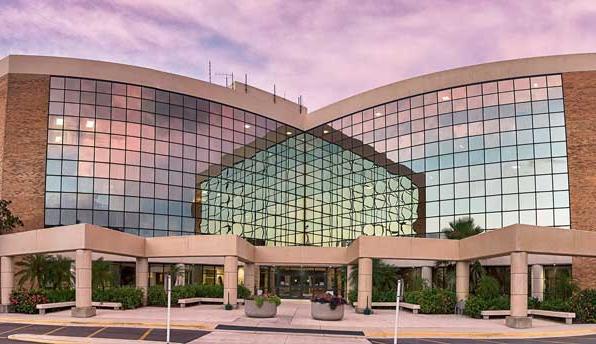Public Works provides these resources for those doing business with the department.
Traffic Signals / Lighting / School Flashers
- Supplemental Specifications for Traffic Signal Installations
- Supplemental Specifications for Roadway Lighting Systems
- Supplemental Specifications for Decorative Lighting Systems
- Supplemental Specifications for Solar School Flashing Beacon Installations
- Supplemental Specifications for Fiber Optics at Traffic Signal Devices
Road & Bridge Construction
National Pollutant Discharge Elimination System
Erosion and Sediment Controls for Construction Sites
Turbid discharges from construction sites can flow into surface waters when stormwater runs through sites of industrial activity; these discharges may pick up pollutants and transport them into national waterways. Turbid discharges from construction sites can affect commercial fisheries, damage aquatic life such as sea grass beds by blocking out sunlight, restrict swimming areas, and affect the navigability of the nation's waters.
Construction Activity Information
In 1972, the Federal Water Pollution Control Act, also referred to as the Clean Water Act (CWA), was amended to provide that the discharge from any pollutant to waters of the United States from any point source is unlawful without a National Pollution Discharge Elimination System (NPDES) permit. Congress added section 402 (p) to the CWA in 1987 to establish a comprehensive framework for addressing stormwater discharges associated with industrial activity. Construction activities that disturb at least five acres of land are defined in 40 CFR 122.26(b)(14)(x) as an "industrial activity".
Charlotte County requires that all parties engaging in construction activity, disturbing one acre or more, provide a copy of the water Management District Permit or, if exempt, a Stormwater Pollution Prevention Plan (SWP3).
Find out more at the Environmental Protection Agency's Construction General Permit Website.
The SWP3 is a basic statement of how the site should be managed to prevent or significantly reduce discharge of pollutants from the site during construction activity. No solid materials, including building materials, shall be discharged to waters of the United States. The SWP3 should be modified as needed and contain the signatures of all contractors and sub-contractors attesting to their willingness to abide by its directives.
Per the NPDES construction general permit, then permittee shall retain a copy of the SWP3, required by this permit, at the construction site from the date of project initiation to the date of final stabilization.
All controls shall be consistent with the requirements set forth in the State Water Policy of Florida (Chapter 62-40, Florida Administrative Code), the applicable stormwater or environmental resource permitting requirements of the Florida Department of Environmental Protection (FDEP) or appropriate Southwest Florida water Management District (SWFWMD) and the guidelines contained in the Florida Development Manual: A Guide to Sound Land and Water Management (FDEP, 1988) and any subsequent amendments.
NOTE: To verify the requirements for specific conditions, you may wish to visit FDEP's National Pollutant Discharge Elimination System General Permit for Stormwater Discharges from Construction Activities.
Industrial Activity Information
The Clean Water Act (CWA), amended in 1972, provides that discharging of pollutants into waters of the United States from any point source is unlawful without a national Pollution Discharge Elimination System (NPDES) permit. For a number of reasons, United States Environmental Protection Agency (USEPA) and authorized NPDES states have failed to issue NPDES permits for the majority of point source discharges of storm water. Recognizing this, Congress added section 402(p) to the CWA in 1987 to establish a comprehensive framework for addressing storm water discharges associated with industrial activity.
Most storm water point source discharges related to industrial activities are required to obtain an NPDES permit. This may be accomplished by filling a Notice of Intent (NOI) for industrial activities. However, some facilities are eligible for the "no exposure" exemption. The "No Exposure Certification" form must be filed along with the NOI and USEPA. For more information on NPDES permits for industrial activities, please visit http://www.dep.state.fl.us/water/stormwater/npdes/industrial1.htm.
Facilities subject to a point source discharge NPDES permit are also required to prepare a Storm Water Pollution Prevention Plan (SWP3). Existing environmental management plans must also be evaluated for consistency to determine which, if any, provisions can be incorporated into the SWP3.
Other related plans may include the Preparedness, Prevention and Contingency Plan (40 CFR Parts 264 and 265), the Spill Control and Countermeasures Plan requirement (40 CFR Part 112), the national Pollutant discharge Elimination System Toxic Organic Management Plan (40 CFR Parts 413, 433, and 469) and the Occupational Safety and health Administration (OSHA) Emergency Response Plan (29 CFR Part 1910).
Because the conditions which affect the presence of pollutants in stormwater discharges vary among industries, today's permit contains industry-specific sections that describe the storm water pollution prevention plan requirements, the numeric effluent limitation requirements and the monitoring requirements for the industry.






